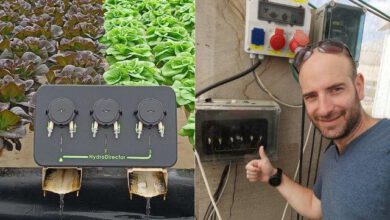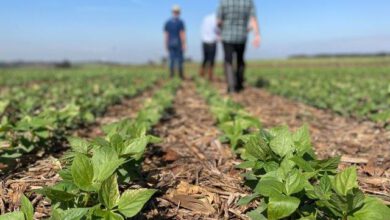Grafted Seedlings Benefit South African Farmers
Northern South Africa is considered the salad bowl of the entire region

Northern South Africa is considered the salad bowl of the entire region. Most of the vegetables consumed by the 55 million inhabitants of southern Africa are grown here.
Nine years ago, Hishtil entered the SA market and established its first vegetable and grafted seedling nursery in northern Limpopo, together with a local firm, ZZ2, the largest tomato grower in SA. Some two years ago another nursery was established near Cape Town in the distant south.
The two nurseries are 1,650 km apart, prompting the establishment of another nursery, for both market expansion and easing haulage.
The two nurseries produce over 150 million seedlings, some of which are exported to neighbouring Botswana, Namibia, Mozambique and Angola.
Hishtil SA CEO Shlomo Zuker says, ‘When we introduced the grafted seedling technology to the SA market, expectations were far below the actual outcome. We thought that an undeveloped market would not appreciate our complex and premium product; however local farmers, some of whom are highly sophisticated, saw the potential for increased yields and growing under extreme conditions. The authorities also sought decreased pesticide use.’
.jpg) | .jpg) |
Grafted seedlings are relatively soil borne disease and pest resistant, thus reducing soil treatments. Significantly, this has radically reduced ‘harsh’, environmentally hostile pesticide usage.
The hardy grafted seedlings also thrive in poor quality water, saline soil and extreme weather. The unique rootstock upon which the scion is grafted is able to handle the high salinity that normal plants cannot.
High yields are another advantage. For example, the pumpkin rootstock used for watermelons, require fewer seedlings for identical yields. Despite the higher price, cost per Hectare is reduced and the farmer’s security is increased.
Other Hishtil products in SA include: tomatoes–20%, watermelon–10%, lettuce/ cabbage – 25%, some 20 products, including herbs and medicinal plants.
Some vegetables are greenhouse/net house crops but 75% of them are open field.
Shlomo relates that in addition to grafted tomatoes, watermelon, cantaloupe and capsicum, Hishtil SA also produces grafted papaya that is resistant to the typical papaya soil diseases. ‘Production started three years ago, it is catching on and it forms part of our attempts to create solutions for farmers.’
Another innovation to which Hishtil SA has been party for the past two years is biopesticides in collaboration with BioBee. Together, they offer farmers packages which include grafted seedlings with treatment either at the nursery stage or at an advanced field stage.




